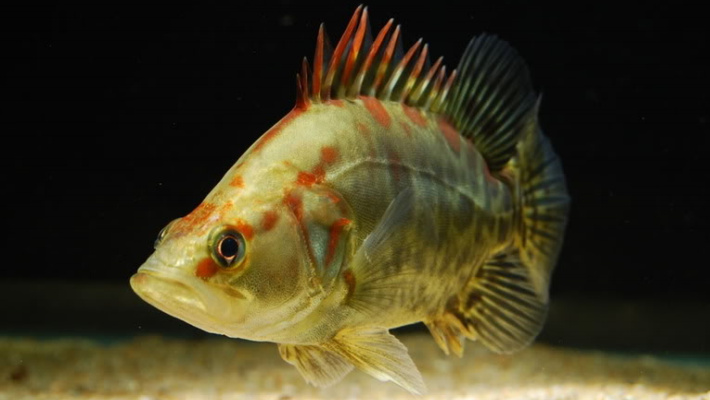|
Free amino
acid content in three species of earthworms, cosmopolitan tiger worms, Eisenia foetida, African earthworms, Eudrilus eugeniae, and Indian blue
worms, Perionyx excavatus, are studied by Reinecke et al. (1991). Leucine and
arginine are most abundant among essential amino acids in all three species.
Crude protein content are 66,13 % in E.
foetida, 58,38 % in E. eugeniae,
61,63 % in P. excavatus and 61,00 %
in fishmeal, for comparison. The amino acid profile in four species of
earthworms namely E. eugeniae, Hyperiodrilus
africanus, Alma millsoni and Libyodrilus violaceus, in comparison with E. foetida, is studied by Dedeke et al. (2010). Arginine is most
abundant in four African species and one of the abundant essential amino acids (after
leucine and lysine) in E. foetida. Glutamic
and aspartic acids, among non-essential amino acids, are most
abundant than arginine and leucine in all five species, achieving 16,4 g per100g crude protein in E. foetida.
Lysine and
methionine, that are limited amino acids in most
feedstuffs, are present in all species of earthworms (Dedeke et al., 2010).
Earthworm Meal
Earthworm
meal (Lumbricus rubellus) has become
one of the natural materials that can be used
as feed additive. The study of Istiqomah et al. (2009) is carried out (1) to evaluate the amino acid
profile of earthworm and earthworm meal, (2) to calculate the value of essential
amino acid index of both materials. It is shown that essential amino acid of
earthworm is dominated by histidine (0,63 % of dry matter basis), meanwhile the
earthworm meal is dominated by isoleucine (1,98 %). The non-essential amino
acid of earthworm and earthworm meal is dominated by glutamic acid (1,52 % and 3,60
% of dry matter basis, respectively). The value of essential amino acid index
obtained from earthworm meal is higher (58,67,%) than those from earthworm (21,23
%). It is concluded that powdering method of earthworm by using formic acid
addition has higher amino acid balance than earthworm.
According
to data by Istiqomah et
al. (2009) and other authors, earthworm meal of L. rubellus contains 65,63 %
crude protein, earthworm meal of L. terestris contains 32,60 % crude protein, earthworm meal of P. excavatus contains 57,20 % crude protein and have complete amino
acids. Dynes (2003) gives the similar results on crude protein in earthworm
meal of Eisenia andrei and E. foetida.
Silage
Earthworms
(E. foetida and L. rubellus) have been ensiled with sorghum and molasses in the
following proportions: 1) 60% earthworms, 40% sorghum; 2) 60% earthworms, 40%
sorghum, adjusting pH to 4,0 with HCl; 3) 60% earthworms, 20% sorghum, 20%
molasses; 4) 60% earthworms, 20% sorghum, 20% molasses, adjusting pH to 4,0
with HCl (Ortega Cerrilla et al., 1996). These four mixtures have been allowed
to ferment for 15 days at 18o C. No essential differences are in the
percentage of moisture, ether extract, crude fiber and crude protein for
treatments 1, 2, 3 and 4, respectively, hence Ortega Cerrilla et al. (1996)
conclude that it is possible to preserve earthworms E. foetida and L. rubellus
by ensiling, adding carbohydrates like sorghum or molasses, and that an addition
of acids to have an adequate fermentation is optional.
Vermicomposts
Basically,
vermicomposts contains cow, horse and other manure, agricultural waste, tree leaves
and other vegetable byproducts, processed by earthworms, together with the earthworms
themselves. Vermicomposts are effectively used in aquaculture where they play
dual role
(e.g., Chakrabarty et
al., 2010; Rafael et al., 2012; Sutar et al., 2012). Firstly, particles of
vermicomposts are eaten by fish. Secondly, vermicomposts fertilize the nursery
ponds increasing
the forage base of juvenile fish due to the intensive development of phytoplankton
and zooplankton.
In
additon, vermicomposts can be used together with unfermented or fermented
agricultural byproducts such as straw, grain chaff, brans and more. For
example, it is shown in experiments with the fingerlings of Nile tilapia (Oreochromis niloticus) (Rafael et
al., 2012) that combinations of fermented rice bran and vermicompost (20-25 %) (processed
by E. eugeniae) give the better
growth of fish in comparison with feeding with unfermented rice bran only or fermented
rice bran alone.
Basic References
Chakrabarty
D., Das S.K., Das M.K., Bag M.P. 2010. Assessment of vermicompost as direct application manure in fish farming ponds. Turkish Journal of
Fisheries and Aquatic Sciences 10, 47-52
Dedeke G.A., Owa S.O., Olurin K.B. 2010. Amino acid profile of four earthworms species
from Nigeria.
Agriculture ans Biology Journal of North
America 1, 97-102
Dynes, R. A., 2003. Earthworms: technology information to enable the
development of earthworm production. Australian Government, Rural Industries Research and Development Corporation Publication No. 03-085, Canberra
Istiqomah L.,
Sofyan A., Damayanti E., Julendra H. 2009. Amino acid profile of earthworm and earthworm
meal (Lumbricus rubellus) for animal
feedstuff. Journal of the Indonesian
Tropical Animal Agriculture 34, 253-257
Ortega
Cerrilla M.E, Reyes Ortigoza A.L, Mendoza
Martínez G. 1996. Chemical composition of earthworm (Eisenia fetida and Lumbricus
rubellus) silages. Archivos
Latinoamericanos de Nutrición 46, 325-328
Rafael
D., Guerrero III, Guerrero L.A.
2012. The use of fermented rice bran and vermicompost as supplemental feeds for
Nile tilapia (Oreochromis niloticus) fingerlings in aquaria. Journal of Recent Trends in Biosciences, India 2, 1-2
Reinecke A.J., Hayes J.P., Cilliers S.C.
1991. Protein quality
of three different species of earthrvorms. South
African Journal of Animal Science 21, 99-193
Sutar V.B., Chavan B.R., Bonde V.R., Balamani C.H. 2012. Efficacy of farm yard manure and vermicompost on
growth and servival of Catla catla, Labeo rochita and Macrobrachium rosenbergii in rearing pond. DAV International Journal of Science 1, 128-131
|








 SUBSCRIBE
SUBSCRIBE


